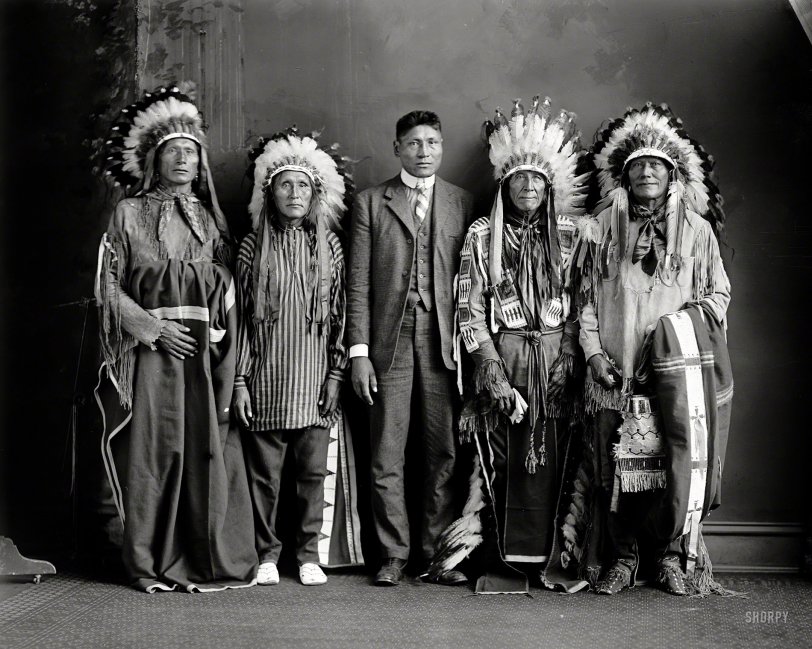


Framed or unframed, desk size to sofa size, printed by us in Arizona and Alabama since 2007. Explore now.
Shorpy is funded by you. Patreon contributors get an ad-free experience.
Learn more.

- Freeze Frame
- Texas Flyer wanted
- Just a Year Too Soon
- WWII -- Replacing men with women at the railroad crossing.
- Yes, Icing
- You kids drive me nuts!
- NOT An Easy Job
- I wonder
- Just add window boxes
- Icing Platform?
- Indiana Harbor Belt abides
- Freezing haze
- Corrections (for those who care)
- C&NW at Nelson
- Fallen Flags
- A dangerous job made worse
- Water Stop
- Passenger trains have right of way over freights?
- Coal
- Never ceases to amaze me.
- Still chuggin' (in model form)
- Great shot
- Westerly Breeze
- For the men, a trapeze
- Tickled
- Sense of loneliness ...
- 2 cents
- Charm City
- What an Outrage
- Brighton Park
Print Emporium
Redwater in Washington: 1917

Washington, D.C., circa 1917. "Indians: Redwater and group." My headdress was at the cleaners. Harris & Ewing Collection glass negative. View full size.
Cheyenne/Arapaho Delegation
This would have been a joint Cheyenne/Arapaho delegation to Washington to meet with President Wilson and discuss land claims - particularly their claim to the western Black Hills. Thaddeus Red Water, as the excerpt linked by Book Reader notes, was a Carlisle student and a football star who learned English. It was customary for the emissaries from the reservation to where their best finery - often handed down from many generations - to meet their "Great Father" - while Red Water would have done his best to do the same as an intermediary and translator for the delegates.
All but the man to Red Water's right have special trade/saddle blankets, and the two to his left are holding a piece of paper in their hands - probably a well prepared plea to read before the President. The men on his right would be the Arapaho leaders, and Cheyenne on his left.
Head dresses are among the most misunderstood American Indian symbol. Only plains tribes wore them, and almost always only for ceremonial purposes. The Cheyenne and Arapaho were the most prevalent users of them (with the Sioux considered their "inventor), and they carried great significance for the wearer, as each feather represented a victory in battle or some other great accomplishment. One simply did not make a headdress, they were earned. After the 1920s, however, the absence of warfare changed things, and ceremonial pieces were created for special events and as gifts to visiting dignitaries. They also became common aspects of fairs and tribes around the country began to wear them in tourist-oriented "shows" further muddling America's notion of what they meant.
Thaddeus Red Water
I believe the man in the middle is Thaddeus Red Water, seen here in his headdress. There is not much information about him on the Internet, except for this excerpt.
Just in Time
The half-smiling fellow on our right has a pocket watch in his breast pocket, secured by a heavy chain with a decorative fob. I'd love to see that watch today! On the other hand (or foot) I think his moccasins would leave my wimpy feet screaming for mercy.
























On Shorpy:
Today’s Top 5